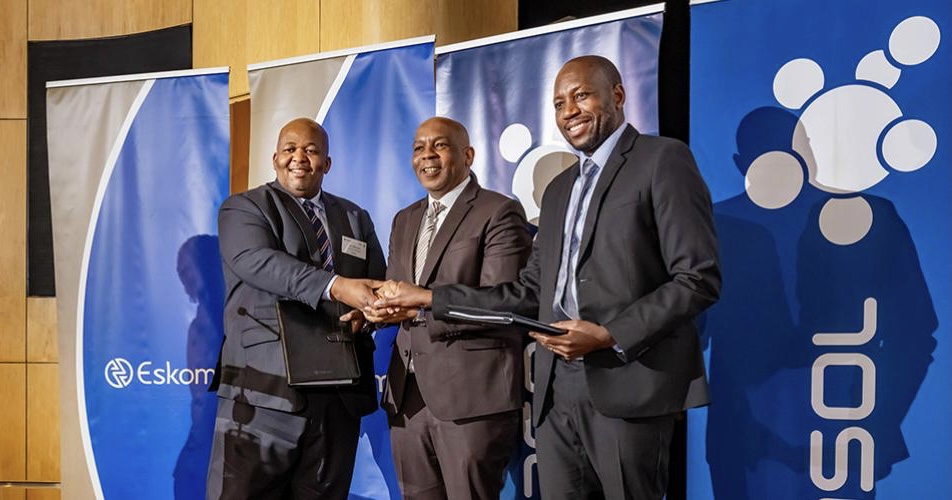KEY POINTS
- Sasol and Eskom signed an MoU to explore LNG imports as Mozambique’s gas supply declines from 2027.
- Sasol extended the gas-supply plateau to mid-2028 but stressed the need to transition to LNG for long-term supply stability.
- Eskom aims to use gas-to-power generation to anchor domestic demand and repurpose coal plants near the Rompco pipeline.
Sasol and Eskom signed a memorandum of understanding (MoU) to replace declining natural gas imports from southern Mozambique with liquefied natural gas (LNG) by 2027.
Eskom CEO Dan Marokane and Sasol CEO Simon Baloyi signed the memorandum of understanding during a ceremony at Eskom’s Megawatt Park. Energy Minister Dr. Kgosientsho Ramokgopa also attended the event.
Sasol’s LNG plans to offset ‘gas cliff’
Sasol announced in early September that it extended the timeline for the “gas cliff” by a year. This has led to a delay in the expected reduction in gas supply from mid-2026 to mid-2028.
Despite the one-year extension, Baloyi pointed out that this delay only postpones the inevitable decline in gas imports from Mozambique’s Pande and Temane fields. He urged using the additional time to transition to liquefied natural gas imports.
Sasol plans to play an important role in aggregating domestic demand for LNG. To provide gas users with a more stable supply which might be more expensive.
Baloyi said at the ceremony, “The extension has given us space to bring in LNG, and that time must not be wasted,” Baloyi said at the ceremony.
Eskom to leverage gas-to-power generation
Sasol’s efforts could complement initiatives from the Industrial Gas Users Association of Southern Africa, which represents large gas consumers.
Domestic gas demand reaches up to 180 PJ/y, with most of it concentrated in Gauteng and KwaZulu-Natal, currently supplied through the Rompco pipeline from Mozambique. However, the current demand is not enough to secure LNG at competitive prices.
“The context of this MoU is on the back of seeking to exploit opportunities that may arise based on the infrastructure that already exists, namely the Rompco pipeline,” Marokane explained.
“It is this pipeline whose capacity will be redundant as indigenous gas from Mozambique declines, [and] the importation of LNG will take advantage of this installed infrastructure to access the markets that are already existing inland,” he added.
According to a report by Mining Weekly, the agreement also provides Eskom with flexibility to advance its GtP strategy. The utility previously announced a 20 GW generation project pipeline, which includes 4 GW of GtP projects. Among these is a 3 GW project proposed for Richards Bay.
Energy Minister Ramokgopa described the MoU as part of South Africa’s strategy to address the looming gas cliff. He said the government plans to support the initiative through partnerships, including discussions with Qatar, which has expressed interest in South Africa’s LNG plans.
Eskom and Sasol also plan to explore additional gas-sourcing options in South Africa, the Southern African Development Community, and across the African continent. No specific projects or timelines for implementing the MoU were provided.



